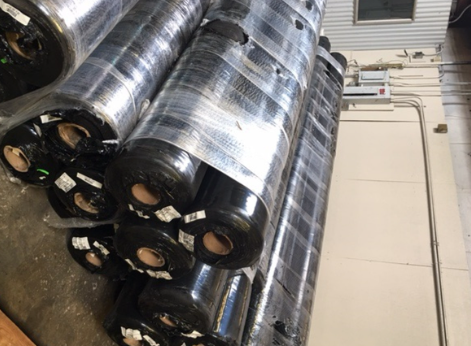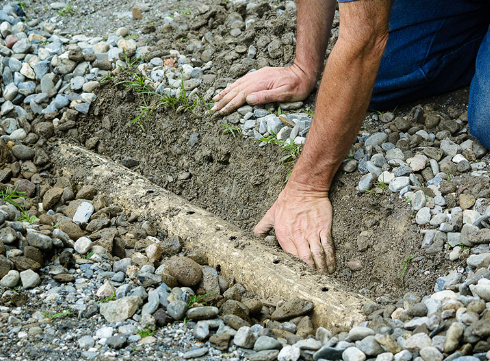- Understanding the Role of Geomembrane Liners in Waste Management
- Innovations in Geomembrane Liners for Water Management
- Geomembrane Liners: A Comprehensive Guide
- The Future of Geomembrane Liners in Civil Engineering
- Geomembrane Liners: Enhancing Landfill Stability
Manager:Alvin Wang
WhatsApp:+62 8983806051
Tel:+86 10-5797-1075
Email:steelwang@okorder.com
Address:3rd Floor, No.2 Building, No.1 Sanlihe Road
Are geotextiles biodegradable?
Geotextiles are very essential in various civil engineering and environmental projects including erosion control, slope stabilization, and soil reinforcement. Geotextiles that are mostly used in the market include wholesale geotextile, polyester geotextiles, filament geotextile and those used in slope protection and stabilization. Nevertheless, there has been increasing concern about their biodegradability despite being widely applied in various sectors. In this article we will be discussing these kinds of geotextiles by starting with an answer to whether they are biodegradable.

Understanding Wholesale Geotextile
Wholesale geotextile refers to geosynthetic materials bought en masse mainly for a huge construction project or landscape construction. These textiles may serve many different purposes such as filtration, drainage, and reinforcement. Contingent upon the material, wholesale geotextiles made from synthetic polymers like polypropylene or polyester have high tensile strength and durability which enables them to withstand adverse environmental conditions better.
Polyester Geotextiles: A Closer Look
Polyester is one of the materials which is manufactured into fiber based textiles that are referred to as wholesale geotextiles. These fibers are highly resistant to UV radiation and chemical degradation making them suitable for long life outdoors applications. They prevent soil erosion as well as promote vegetation growth when used for example in geosynthetic slope protection thus aiding slope stability on slopes.
Geotextile Slope Protection: Combating Erosion
Preventing soil erosion on sloping surfaces is a major application of the use of geomembranes to protect slopes. The utilization of geo-textiles in slope protection systems helps retain soil particles while allowing water to drain freely; hence decreasing surface runoff risks and landslides. Polyester geo-textiles can be found worldwide because they are toughened against the environment to endure slope protection projects.
Filament Geotextile: Strength in Structure
Continuous filament yarns differentiate filament geosynthetics, which possess great tensile strength and filtering properties than staple fiber geotextiles. The type of geotextile is often used in applications that need high mechanical performance such as reinforcement of soil for structures and containment of granular materials. Such artificial filaments, in contrast to natural ones like jute or coconut coir assist in sustainable construction by increasing the life span and secureness of civil facilities.
geotextile slope stabilization: Ensuring Structural Integrity
Geosynthetic slope stabilization means using geosynthetics to reinforce slopes and embankments so that erosion will be prevented and structural integrity maintained. Being interlocked with the soil mass, they distribute applied loads thus reducing the chances of failure on slopes. Specifically, polyester geo-textiles are stress resistant; therefore, they suit long-term slope stabilization projects across various climates and terrains.
Biodegradability: Addressing Environmental Concerns
Biodegradability of these fabrics is still a topic under discussion though they have numerous benefits to civil engineering. On the other hand synthetic products such as wholesale geotextiles or polyester are not perishable like natural ones, such as jute or coir which decompose over time. In keeping with this durability, disposable geotextiles become questions about how it affects environmental issues when its useable life ends.
The Environmental Impact of Synthetic Geotextiles
For instance petroleum-based polymers are primarily used in making synthetic geotextiles including wholesalegeotextile and polyestergeotextiltes (3). These materials are however extremely strong particularly due to their synthetic nature although this present future problem relating to waste management practices and ecological welfare because they remain in the surroundings eternally after throwing away. When dumped improperly at disposal sites or anywhere else especially within landfills or natural habitats, geotextiles may present a danger to the environment or wildlife.
Addressing the Challenge: Sustainable Alternatives and Recycling
The geosynthetic industry is taking active steps towards the use of sustainable alternatives and recycling initiatives to mitigate the effects of synthetic geotextiles on the environment. The research works focus on constructing biodegradable geotextiles which are either made from renewable resources or contain additives that can be decomposed without losing their effectiveness. Recycling advancements ensure used geotextiles are recovered and reprocessed thus reducing the need for virgin materials as well as minimizing waste produced.
The Role of Regulations and Standards
Policy frameworks and industrial norms play an important role in promoting environmental consciousness within the geosynthetic sector. Governments and global institutions set out recommendations on how to manufacture, use, and dispose off geotextile products while avoiding damage to nature which may compromise public safety. Conformance with these regulations encourages environmentally friendly substances or practices while also making manufacturers responsible for their product’s effect on the environment.

Conclusion
In conclusion, whether or not a particular type of geotextile is biodegradable is a complex interplay among several factors including material composition, application context, and environmental concerns. Although they have proven strength, durability, performance etc., synthetic geotextiles such as wholesale giotex (and) polyester giotex have a long-term impact that needs careful scrutiny with appropriate actions taken in advance. This will enable it reduce its ecological footprint through embracing sustainable options as well promoting recycling initiatives besides meeting regulatory requirements so that civil engineering can move towards a more sustainable future serving human beings without destroying the environment.”
- Previous:Does geotextile fabric break down?
- Next:What is geotextile mesh?






